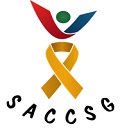Original Research
Considerations for the verification of volumetric modulated arc therapy-planned dose distributions
Submitted: 23 May 2019 | Published: 02 September 2019
About the author(s)
Lourens Strauss, Department of Medical Physics, University of the Free State, Bloemfontein, South AfricaWilliam Shaw, Department of Medical Physics, University of the Free State, Bloemfontein, South Africa
Abstract
Background: Volumetric modulated arc therapy (VMAT) is the standard of care for many clinical indications, but should only be considered with proper technical support and quality assurance (QA) in place. Despite the high accuracy of VMAT systems, errors can be present and adequate verification is required. Dosimetric VMAT verification systems have a broadly similar analysis philosophy. However, many factors influence the analyses and the subsequent QA outcome, based on which the plan will pass or fail.
Aim: This study investigated various factors that influence the dosimetric impact and detectability of known linac component deviations on VMAT QA, including geometries, tissue densities, gamma criteria and dose–volume differences.
Setting: Universitas Hospital (Annex), Bloemfontein, South Africa.
Methods: Deliberate multi-leaf collimator (MLC)-bank offsets were introduced on four different VMAT plans of the prostate, nasopharynx and brain. Measured reference dose sets were compared to measured QA results, using the IBA Dolphin© detector and Compass© software for three dosimetric scenarios. Gamma pass rates over a range of criteria from 1%/2-mm to 4%/4-mm in the total volumes and per structure, as well as dose–volume differences were studied.
Results: Gamma tests in the total patient/phantom did not sufficiently detect errors. The calculation media did not influence the QA outcome greatly. However, the detection geometry affected the results. Per structure gamma analyses provided superior error detection, although still missed some clinically relevant differences. The addition of dose–volume analyses highlighted several important errors.
Conclusion: Volumetric modulated arc therapy using only total volume gamma analyses can easily overlook clinically relevant errors. The choice of gamma criterion is crucial. Verification with at least a per structure gamma test in combination with dose–volume checks is recommended, especially in small target volume cases.
Keywords
Metrics
Total abstract views: 3099Total article views: 3557



